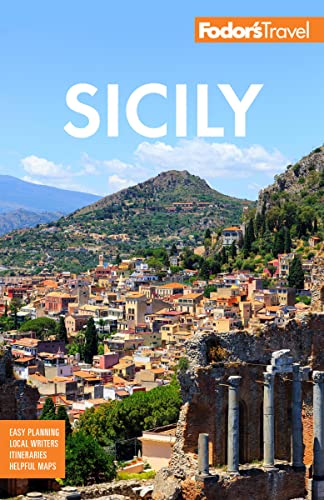Sicily is a land of dramatic juxtapositions, and nowhere is that more evident than its eastern coast. From white sandy beaches on the northeastern tip just outside Messina to the dramatic ridges of the Nebrodi Mountains to leafy vineyards that cascade down the flanks of fiery Mount Etna, the eastern shore highlights the intense diversity of this sunny Mediterranean isle.
In this region, you see the forces of nature constantly at work, with a persistence that’s only surpassed by the resilience of the human spirit. Between earthquakes, tsunamis, and volcanic eruptions, it’s a wonder there’s anything left standing here. Messina straddles a fault line and has been leveled multiple times, most recently in 1908 when the largest earthquake in European history (and a tsunami that followed 10 minutes later) wiped out the city and caused the shore to sink several feet overnight. Mount Etna, one of the world’s most active volcanoes, is in a constant state of eruption, and in centuries past, her lava flows have covered Catania and surrounding areas. The city’s buildings and roads constructed of basalt serve as daily reminders of Etna’s power, and the craggy lava stone coastline reinforces the transmutability of the region's existence. Significantly, each and every time disaster has struck, these areas have been rebuilt.
It’s not only Mother Nature that has tested Sicilian tenacity. All of Sicily has been conquered again and again by outside forces. With its fertile soil, mild climate, and prime location along shipping routes, it’s a triangle of land that every great civilization has coveted. You can see evidence of that in the island's vastly different architectural styles. Here in the east, you’ll primarily see the influence of the Romans, Greeks, Byzantines, and Normans. In Taormina, the Greek amphitheater stands as one of the best-preserved relics of the ancient world, still in use today for concerts and operas. In Aci Castello, the castle, a fortification first built by the Romans and subsequently rebuilt by the Byzantines and then the Normans, commands the shoreline of the Cyclops Riviera. In Catania, the cityscape runs from medieval to Baroque. Each town up and down the coast tells this repeated tale of persistence and rebirth.
Despite the weighty history, residents of the east have thrived, especially culturally. They have fostered great writers, such as Giovanni Verga. They have built luxury resort villages that are cemented in global memory as the places to be. They have turned the slopes of Etna into one of the preeminent wine destinations in the world. They have created a cuisine that highlights the island’s bonanza of natural resources. And they might be some of the most adaptable people anywhere. Indeed, to visit the east is to climb into the soul of Sicily.




